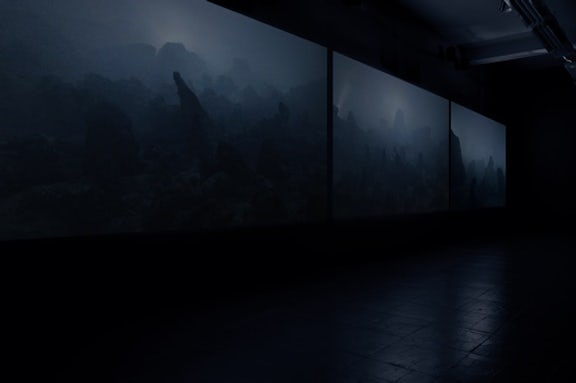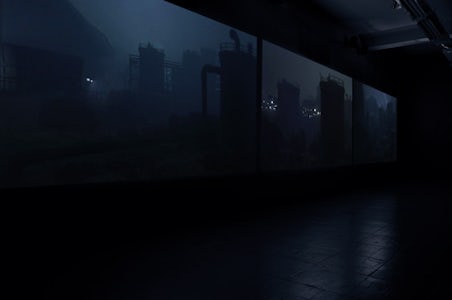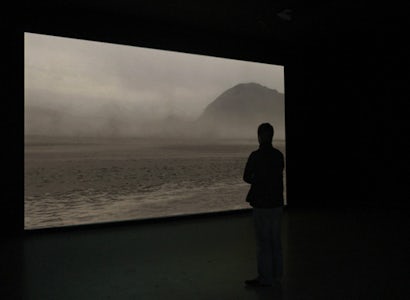Wim Catrysse

Dusking
The films of Catrysse might be considered an investigation into the way the body relates to its surroundings. The work starts from simple deeds or actions, performed in self constructed or altered environments - often small in dimensions. Apart from the 'actors' and the spectator the camera can almost be considered a third participant, because it is involved in the scene as a constructional element.
'... In Catrysse's installation, for example, we are clearly seeing precisely what the camera sees and at the same time misconstruing its behaviour (the very fact that it is in motion) to the point where the "real" begins to assume an almost sinister aspect. The tendency then - the resulting shift of levels - is unmistakably towards the "sublime", but in a very particular way. Arriving at a "realisation" of what is actually being pictured by the camera involves us in an intimate "making" or "remaking" of the mise en scene; in the first instance as a mental construction, in order that afterwards it can "become" vivid to perception and to the imagination. By this means our understanding of both the mechanism and the resulting image-pattern is made part of a synoptic apprehension of something approaching a "totality." This is the point at which Catrysse's work draws close to and at the same time separates itself from the cut-and-paste language of cinema ...'
(John Thompson)



Group shows (selection)
Residencies (selection)
Discover Wim Catrysse also among:
Artists
A curated overview of visual artists in Flanders.
Flanders Arts Institute
Expertise centre for performing arts, music and visual arts.

